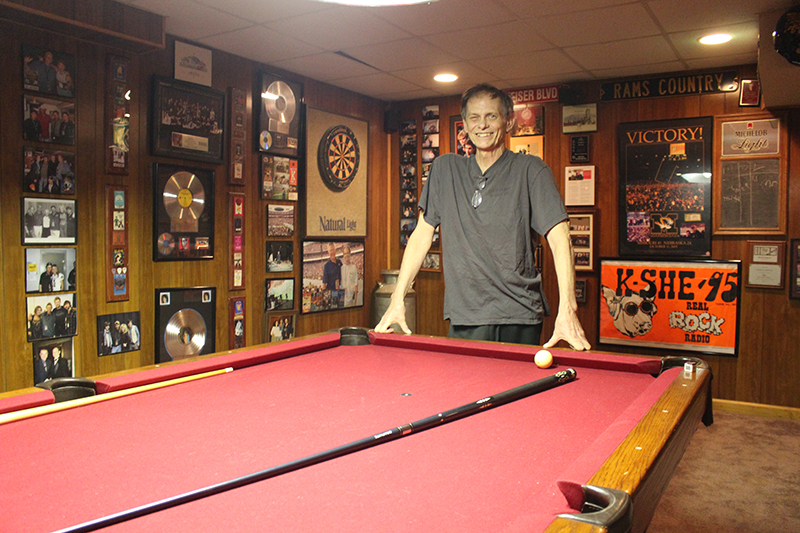
St. Louis promoter rep/tech has had more than a hand in many great shows, careers
In a peaceful St. Louis suburban neighborhood, tucked in on a cul-de-sac there’s a white house that has a finished basement that is essentially the greatest live concert museum I have ever seen. It’s not open to the public, but if you’re fortunate enough to experience the wall-to-wall curation of photos, backstage passes, platinum records, and the unopened bottle of wine gifted by Beyoncé with its proprietor, John “Schmee” Schmiemeier — plan on a five-hour visit. That should get you about two-thirds through it all.
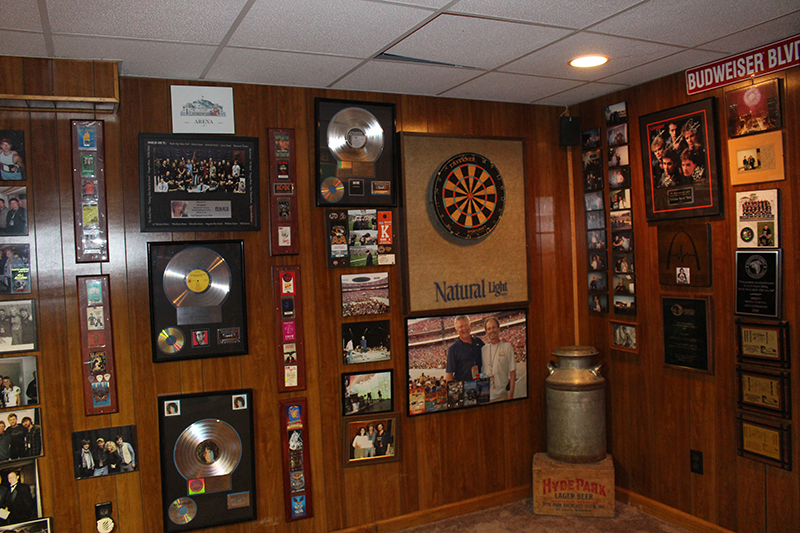
An unsung hero of the business whose decision to never stray too far from his hometown for too long may have kept him from being “bigger” in the business, but his influence on others is undeniable. At one point I was standing in a corner of this basement and, without hardly turning my head, saw him in separate pictures with Gerry Stickells, George Travis, Ed Wannebo and Bobby “Boomer” Thrasher. Meanwhile he was telling me a story about Jake Berry and Charlie Hernandez … all six of whom are Parnelli Lifetime Achievement honorees. Schmee says he has worked 6,000 concerts in 700 venues. In 1983 alone, he did 332 shows, most in the capacity of promoter rep. More recently, those in the know call on him as a pyro technician. He’s too modest to say he’s made some careers, but he definitely held the door open for more than a few. And he has more than a few stories.
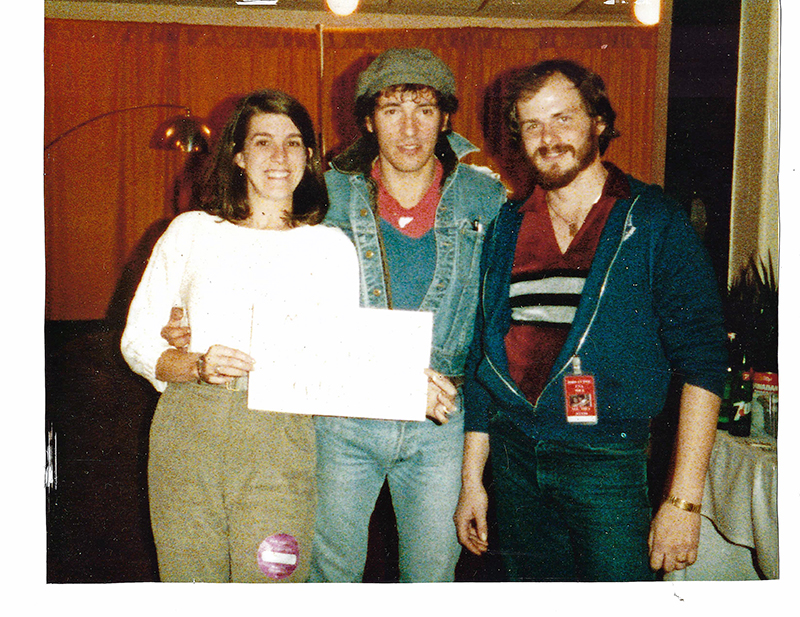
“This is a Job?”
Schmee was born in St. Louis, growing up in the suburb of Affton, going to the high school that John Goodman was also attending. He was an all-star athlete who lettered in several sports all four years, but he was especially drawn to track and field. “I loved pole vaulting,” he says. After high school, he went off to study at a Missouri college in Warrensburg. He didn’t quite make it to graduation — at one point, the administration suggested that maybe he should take a semester off. He threw himself a going away party that dragged into the next morning, whereupon he wandered over to a club where Pure Prairie League had pulled in to perform that night. He wandered in and Herb Ault, who was the band’s production/stage/tour manager, barked, “Hey man, pick up those lights.” “Suddenly I’m doing a load in,” Schmee says, still a bit surprised. At the end of the gig, he was told there was a crew position open, and he was asked if he wanted to “go out with us for a while.” Schmee was like, “This is a job?”

Or was it? The gig he stumbled into had him living out of a Winnebago, taking turns driving with members of the band (who at that time included Vince Gill) and dealing with all the other trappings that go with a no-frills tour in 1978. Then Contemporary Productions, the St. Louis-based live event company and booking agency, reached out to him. “They told me I’d have to start off as a runner.” At that point he was already doing a lot more than that, but he said sure. He quickly moved up from there and soon was a “promoter rep,” which back then was essentially a production manager.
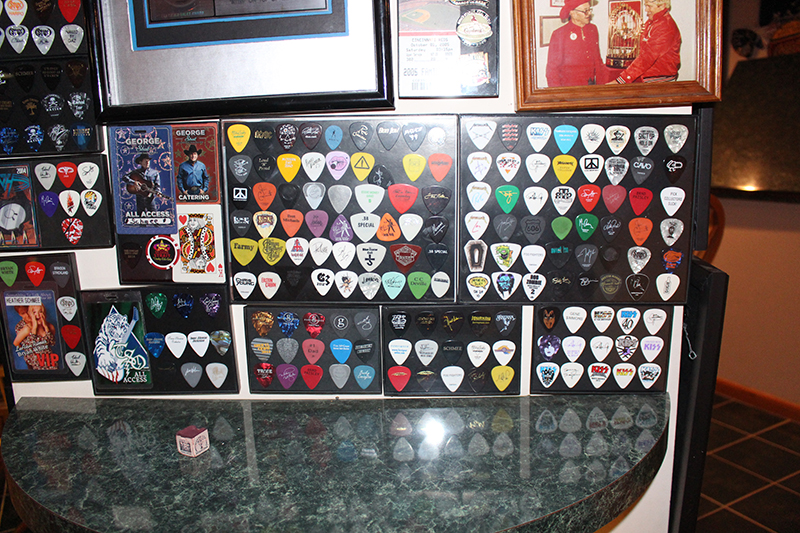
One of his first clues that working for Contemporary was not going to be a 9-to-5 came right away. “I got a phone call at 3 a.m. telling me I had to be at the bus station by 4:30 a.m. to pick up Rolling Stones tickets.” The Stones had announced their intention to play St. Louis just five days earlier, and the show sold out in 84 minutes. The tickets had to be quickly printed in Kansas City and stashed underneath the bus, so getting them to the venue was akin to a clandestine Fort Knox transaction.

Being St. Louis-based, he worked in the nation’s notoriously worst venues. “The Checkerdome was especially horrible,” he sighs. “You could only get a single truck in at a time, though I figured out how to get two by backing one in with the second one going nose-to-nose.” And it had compression rigging — which is really no rigging (the compression ring is a ring that ran outside of the building). Pulling off those increasingly complicated live shows was a team of local crew people headed by Local 6’s Morris Hurley, whom he credits as one of his mentors.

“In 1981, AC/DC brought their Back in Black tour, which featured a huge bell for the ‘Hells Bells’ song in addition to the speaker cluster that had to hang above the stage,” he says. “We stood around trying to figure out how to hang it all, when Morris told me to go dig up 4,600 feet of airplane cable.” Local 6 hung the airplane cable both stage right and left, and they would have to lower it down in position with Crosby U-Shaped clamps/hooks put on for stops, eyeballing it all the way. “The chain hooks where clipped onto the cables, and three stagehands on each side would pull the cable up until it was in its correct position, and then secure the cable to the compression ring on both sides in at the exact correct location. This took the place of grids that you see in other buildings, as the Checkerdome had no steel in the roof.”

Hagar, Part I & II
All cities have their own particular fandom, and St. Louis has long had an evangelical love for Sammy Hagar. Schmee was there when it started, essentially playing Cupid. At the beginning of his solo career, Hagar came to the Checkerdome as the opening act in 1979 and was given a mere 30 minutes to play by the headliner, Boston. “There were all these girls crowding the stage for Sammy, and the push from the crowd was endangering them, so I started just pulling them up on stage [to safety],” Schmee says. “The show was being broadcast on the syndicated rock radio show King Biscuit Flower Hour, and that DJ proclaimed that the women were ‘jumping up on stage for Sammy.’” Meanwhile, it was Schmee’s call when Hagar was to stop, and some of the guys in Boston, including Tom Scholz, were standing backstage giving Schmee the evil eye, shaking their head and pointing at their watch. “They wanted him off at exactly the 30-minute mark so they could have their allotted 30 minutes to change the set. But I knew I could change that set in 15, so I let Sammy keep playing a while longer, and he rocked it hard after that.” In betting on Sammy instead of Boston is just one example of Schmee’s sorcerer-like instincts — and that was not his only Red Rocker story.
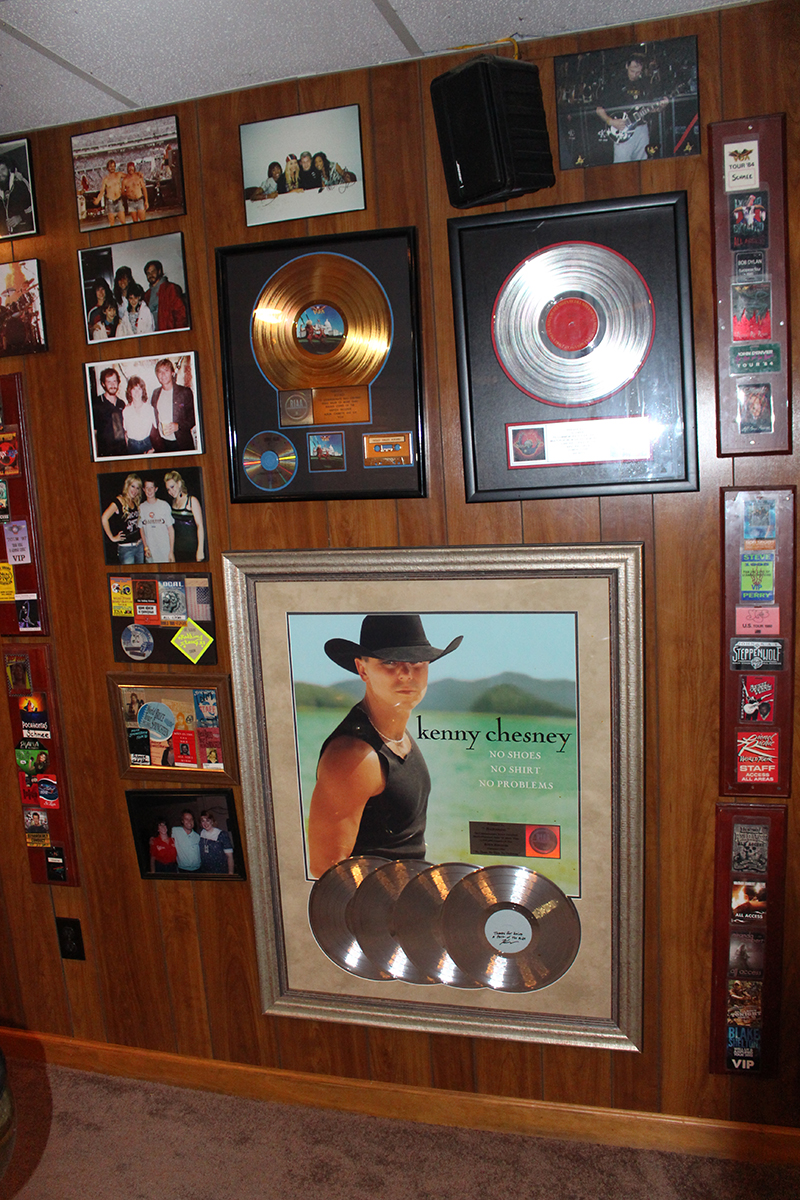
In an industry filled with mind-boggling tales of how somebody randomly fell into this business, this might be the zenith: Taking care of one of the “Superjam” shows in St. Louis’ Busch stadium a year later, Schmee was driving a beat-up van to the gig when he spotted a smokin’-hot red Trans Am driven by a 19-year-old. “I’m always thinking of something to improve the artists’ and crews’ experience, and I had this idea for Sammy,” Schmee says. He started waving for this kid to pull over, and when the kid finally pulled over, at first he was agitated and ready for a fight, according to Schmee. Schmee handed him his card and then explained that he was a production manager for the Contemporary Busch stadium show and got the skeptical driver to believe him. “I got him to the show and backstage where he watched Sammy drive his Trans Am onto the stage, hop out and start playing. As the concert continued, this kid looked at me and said, ‘you got to get me in this business!’” Schmee made a few calls and got him mixing sound. Based on that, Jerry Harvey headed west and eventually rose to be Van Halen’s monitor mixer, and more importantly, founded the JH Audio in-ear monitor company in 2009. “Whenever I see him, he still gives me a pair of his latest in-ears,” Schmee says, dangling a recent set of $1,800 ones.
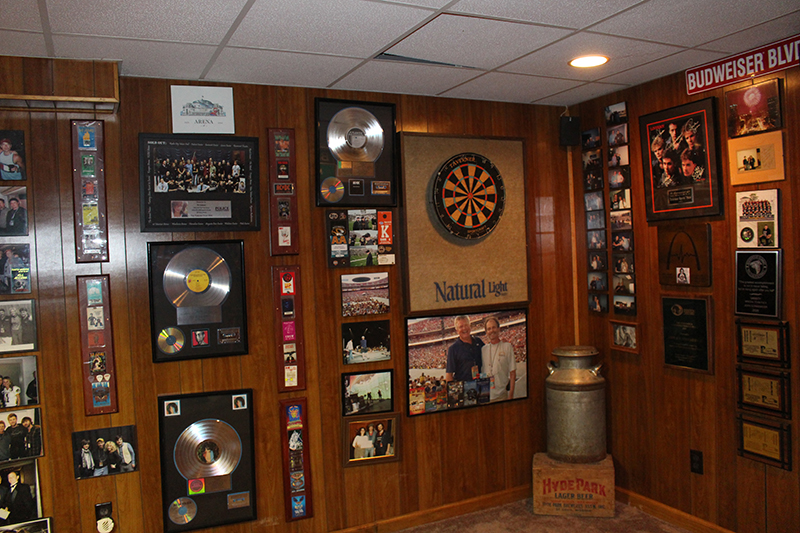
“I had mixed for some smaller bands, but Schmee hooked me up with the prominent people in St. Louis,” Harvey says. “I love that guy.” Harvey has a postlude: In 1996, he was on the road with the then Hagar-fronted version of Van Halen and they were playing the town’s shed, then called Riverport. “Sammy happened to come up and be standing next to me, and I asked him if he remembers that Superjam show in 1980. His response was, ‘Oh man do I — that was the show of my life. I drove this great red Trans Am up on the stage and it was amazing.’” Harvey chuckled and said, “You know, Sammy, that was my Trans Am.”

Road Stories
“I love going to different buildings and figuring out how it’s all going to fit and work,” Schmee says. Making it all happen on the fly was a daily routine for him, and his mettle was again tested in April of 1982. “Kiel Opera House and Kiel Auditorium were not only in the same building, but they shared the same stage, separated only by a fire curtain. So when I saw [Russian ballet dancer] Rudolf Nureyev was performing in the Opera House the same night and time that Rick Springfield was performing in the auditorium, I knew we needed to make some adjustments.” Making the situation worse was the fact that the stage they shared was hollow underneath. Audio bleeding from the rock concert into the space of the classical ballet music was inevitable. Thinking back on his high school days, he thought of those old gray wrestling mats found in gyms. “We went to every freakin’ high school we could and borrowed as many wrestling mats as we could — we had to promise 36 comp Rick Springfield tickets we didn’t have to do it,” he laughs. “We lined the whole auditorium and stuffed the mats under the stage, and it worked. I spoke with Rudolf after, and he said he could feel [the rock music] sometimes and hear it a little once in a while, but he was really nice about it.”
Schmee was put in charge of bringing Jimmy Buffett’s 1983 tour into the Fabulous Fox Theater, which was almost exclusively the venue for musical theater and plays. Almost. “Going into the Fox was funny, because all the stage hands hated me. They were ‘legit theater,’ and here I was bringing a rock ‘n’ roll show into their house.” Not only did he bring it, he was in it. He learned Buffett like to have a crew member swing on a rope above his head while he played “Coconut Telegraph.” When Schmee learned that crew member had a broken arm, he volunteered for the gag. Buffett’s production people were skeptical. “As a test they asked me to climb the rope all the way to the catwalk, 70 feet. Not only did I do it, I did it upside down.” [For reasons I don’t understand and was afraid to ask the why of it, Schmee at this point tells me he wasn’t wearing underwear and needed his wife to bring him some.] Anyway, when the song started playing, Schmee suddenly appeared, swinging on the rope from one wing to the other “doing the worse Tarzan jungle call imitation you ever heard in your life.” But then he swung back hanging upside down, and “Jimmy lost it. He was laughing so hard he had to stop playing the song.” Buffett then asked whoever this guy was to come on stage and talked to him. Asking his name, Schmee said, “Schmee.” “Did your mother give you that name?” Buffett asked.
Of course, he has a Steven Tyler story or two. He spotted Tyler beating up on some member of the Aerosmith crew and muttered “pathetic” loud enough for Tyler to hear. Tyler then took a swing at Schmee, but he tells how he stopped the flying fist in mid-air. Another time, in Norman, OK, Schmee notes how he saw that Tyler’s leg was turning black, having neglected it since a motorcycle accident. He says he took Tyler to the emergency room to get that treated rather than have Tyler continue his own brand of “self-medication.”

Beyonce appreciated his work so much she gifted him a special bottle of wine.
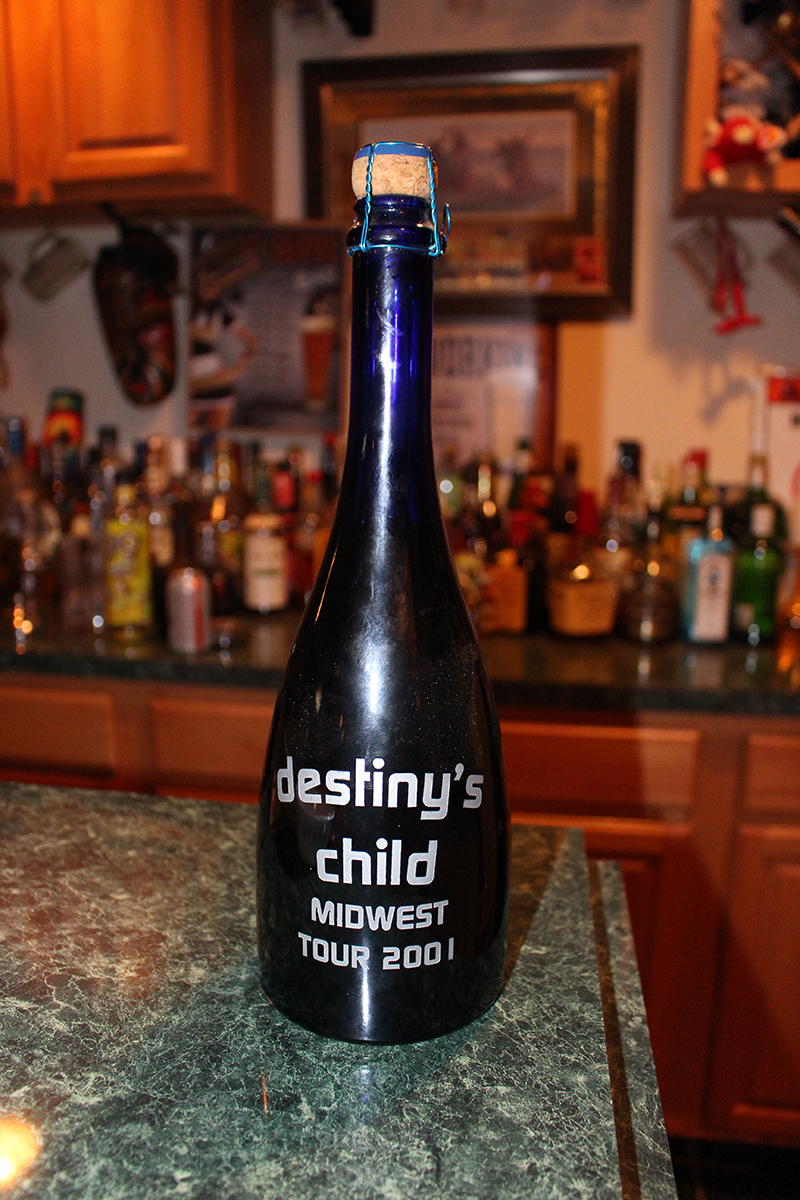
Opening Doors
Schmee is grateful for his mentors in the early days, including Bruce Kapp, “who was the man that gave me the first opportunity to do production for Contemporary.” Robin Tate and Jane Holman were his road mentors. “Without those two, I would never have learned the ins and outs of production.” Schmee paid it forward. “Paul [Korzilius] called me once and asked me if I knew anybody with Bon Jovi,” he recalls, smiling. “I said yeah, and I knew [tour manager] Richard Bozzett, and he asked me to call him and put in a good word for him. I eventually called Richard and said that Paul would be an asset to the tour. Next thing you know, he’s Bon Jovi’s manager!”
Michael “Meesha” Kosciolek was his assistant when Schmee got a call from the Martina McBride camp asking him to move to Nashville and work for them. Schmee passed on the idea of moving out of St. Louis, but told them that Kosciolek would be a great fit. Kosciolek went on to be her production manager, moving on to several other acts.
Once he called Bill Graham on behalf of Charlie Hernandez. Hernandez was with Billy Squier at the time when his career exploded, the Squier team let him go. “They thought he wasn’t growing fast enough, but I saw pure genius in him,” Schmee says. Schmee was asked to replace him on Squier’s tour, and not only did he turn them down, he told them it a was a big mistake to take Hernandez out of the game.
He took Charlie under his wing for a while, showed him a few tricks, and then called Bill Graham. “I told [Graham] that Charlie was smart, knew what he wanted and was hungry.” Graham’s organization took Hernandez out for a couple of months, and then soon he was getting calls from Journey and then Michael Jackson. And his help wasn’t just professional: “While in town, he told me was going to ask a girl to marry him and he needed an engagement ring. I took him to a good jewelry shop where he picked one out for her!”
Schmee was giving a seminar at Webster University on special effects when a kid came up and announced he wanted to be a rock ‘n’ roll lighting designer. Schmee laughed, but the kid was persistent. He gave him some contacts, including one to Parnelli Award-winning lighting designer Steve Cohen. “I told him he’d have to go to L.A., shadow Cohen and work for free.” Seth Jackson did just that, and went on to be a Parnelli Award-winning designer himself, working for the likes of Barry Manilow and Toby Keith. Throughout his career, Schmee had plenty of offers to move up the ladder, but if they involved moving from St. Louis, the answer was always “no.” “All I did was open doors for people to walk through. Nothing more. I also closed some doors for others.”
Schmee didn’t get by on just his talent and reputation — he also had a bit of marketing savvy. He would take a bottle of Stoli vodka and attach his business card to it. “Then I’d take a milk carton, clean it out good, put the Stoli and my card in it, surround it with water and then put it all in the freezer. When it was frozen solid, I’d take it out and remove the carton and then present that block of ice containing the vodka and the card to someone.” Other Schmee touches included hiring a string quartet to play for the crew in the dining room for Destiny Child’s crew. “I used that shtick with many bands during the four decades — but not for everyone.” It was just one of the special touches that endeared him to the acts and the crews.
Regrets?
In 1987, he left Contemporary to start a furniture business and start a family with his wife Deborah. He would then go to work for Monsanto. Impressively, Monsanto would let him go back out on tour occasionally, which he did when necessary, “like when my kids’ needed money for college!” In recent years he’s also worked for Chris Mele, Pyrotecnico COO. “I worked with him a lot during the early days, and I would follow the man no matter what company he’s at. He’s that cool.” Schmee is frequently handling pyro for events around town, including the big shows. Just this year, he’s done Justin Timberlake, Iron Maiden and others.
In 2005, Schmee was diagnosed with Squamous cell carcinoma, a skin cancer that can spread to tissues including the throat. Adding to the shock was that several friends and colleagues, including Gordon “Gungi” Paterson and Harry Donovan, had it too, all at stage four. The other two did not make it, but Schmee took a chance on an operation that miraculously paid off. “Boomer had it too, and he was fortunate to survive it as well.” John adds.
I point out to Schmee that, if he had completely embraced life on the road and said “yes” to even one of those offers, he’d be running around the globe with bands at the level of Springsteen or U2. “I do wonder what my worth would be today if I had gone down that road,” he sighs. “But I made sure I had plenty of time at home. If anything, I regret not being home more.”


